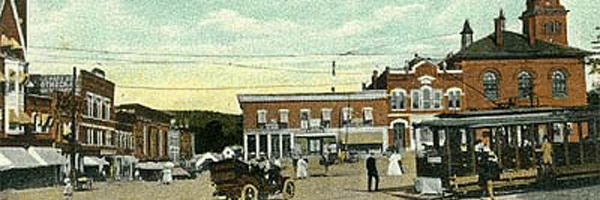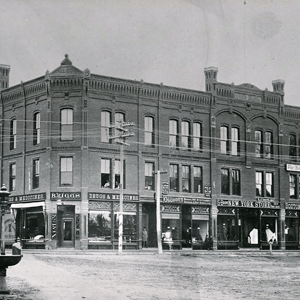A story that’s unfolded recently caught my eye. This spring, Claremont officials condemned Pleasant Street’s Goddard Block for serious life-safety code violations. The building’s storefront was empty, but the second and third floors had 24 low-income apartments.
Walter Fawcett, of Wolfeboro, N.H., has owned Goddard Block, assessed at $427,500 by the city’s appraisal office, since 1990. In April, Fawcett told the Valley News’ Patrick O’Grady that the city had refused to work with him to bring the building up to code at a reasonable cost.
It’s always tough when vulnerable low-income folks suddenly lose the roof over their heads through no fault of their own. But city officials had no choice. The building, plagued by faulty wiring and a broken fire alarm system, was a tragedy waiting to happen. Some tenants found other housing in the city, and others moved away, I’m told.
Meanwhile, Claremont was left with another dilapidated downtown property. It’s no secret that Claremont has struggled to rebound since it lost Joy Manufacturing and its textile mills decades ago.
But it’s not been all doom and gloom.
Guy Santagate, who came up from Chelsea, Mass., (talk about struggling communities) in the early 2000s to become city manager, did a commendable job of launching the revitalization effort. Santagate, who retired in December, was the catalyst behind restoring the city’s Sugar River mill district.
Ryan McNutt, his replacement, also knows something about small, hardscrabble New England industrial cities. McNutt, 40, grew up in Fitchburg, Mass., where he served as the city’s housing director, until becoming town administrator in Lancaster, Mass., in 2014.
“Claremont has a downtown with a lot of historic buildings that are suffering from decades of deferred maintenance,” McNutt said. “Our multi-family housing is in such poor condition.”
What can be done about it?
McNutt told me that Santagate’s success with the mill district frees him up to focus on Pleasant Street. “We need more rental housing to return life to downtown,” he said.
So when Kevin Lacasse, CEO of New England Family Housing in New Hampton, N.H., showed interest in the Goddard Block, city officials couldn’t roll out the red carpet fast enough.
Last week, the Zoning Board quickly granted Lacasse’s requests for variances that reduce the number of required parking spaces and additional apartments.
Lacasse, who has an option to buy the Goddard Block from Fawcett, wants to gut the entire interior, including replacing the electrical system, to make room for 32 apartments and first-floor retail space.
Lacasse needs a federal Community Development Block Grant and low-income state housing tax credits to pull off the project, which is expected to cost as much as $5 million.
Lacasse, 39, already has 600 units of housing in the state. In Claremont, he’s renovated 13 apartments above the Latchis, which now rent for $750 a month and up.
The next challenge — and it’s a big one — is to attract tenants of mixed incomes. If downtown is viewed only as a home for the poor, the revitalization effort won’t succeed.
Affordable housing carries a stigma that’s unfair, Lacasse told me over the phone. “It’s not simply for people sitting back and collecting welfare,” he said.
Downtown will need to attract everyone from young teachers (Stevens High School is within easy walking distance) to retirees looking to downsize. “It could be your grandmother living on a fixed income,” McNutt said.
A bit pie-in-the-sky?
Perhaps. But at least Claremont seems to have a strategy. Call it people first. “We need people before stores,” McNutt said. “Stores don’t want to be where there are no people.”
In that regard, the recent renovation of Stevens High should help attract new residents.
In the age of Amazon and online shopping, McNutt acknowledges that downtown Claremont is “never going to be the 1960s again.”
Still, Norma Griffin and I agreed that we wouldn’t mind seeing the Latchis make a comeback. Powers Shoe and the Corner Book Shop, too.
For many of us, Pleasant Street will always be Memory Lane.


Valley News Correspondent
As a kid in the 1960s, Norma Griffin came to know a downtown Claremont far different from what’s there now.
On Friday nights, shoppers clogged the sidewalks. Traffic was bumper to bumper. Police officers were needed at each end of Pleasant Street, the downtown’s main strip, to direct the crowds and cars.
There was Woolworth’s, Kimball’s Stationery and the Pleasant Restaurant to name just a few of the three dozen businesses that thrived there.
People First in Claremont
“Those were the days,” said Griffin, a Claremont native who manages the bar at American Legion Post 29.
Last Wednesday afternoon, I struck up a conversation with the 62-year-old Griffin while she took a break outside Post 29, a square brick building behind Pleasant Street.
I grew up across the river around the same time as Griffin. We reminisced about the downtown Claremont of our childhoods. Trips to Harry’s Shoe Barn for winter boots. Back-to-school shopping at Fishman’s Department Store. The Latchis Theatre for Saturday afternoon matinees.
“What a change,” Griffin remarked. “It’s all gone now.”
I counted a dozen vacant storefronts — hardly breaking news. Downtown Claremont stopped being a shopping destination 40 years ago.
“The interstates changed everything,” said Claremont Historical Society President Wayne McElreavy, referring to the opening of I-89 and I-91 that shifted shoppers’ focus 25 miles north to West Lebanon. The influx of big box stores on the downtown’s outskirts didn’t help, either.
So why rehash its struggles?
